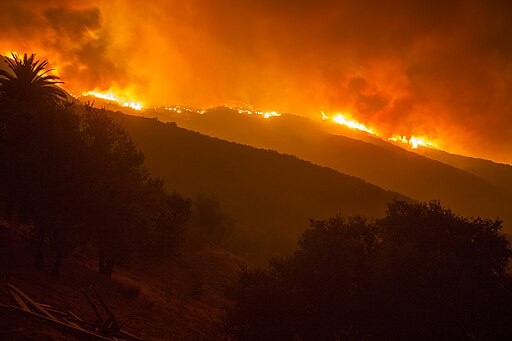Recently, many regions of the world are experiencing changes in wildfire activity due to climatic and anthropogenic factors. Wildfires are known for causing harm not only to properties but to livelihoods and human health. A recent study, however, has revealed that increasing fire activities may have benefited nearby marine organisms.

Thomas Fire: The Largest Wildfire in California
On December 4, 2017, the Thomas Fire created an ash plume and a large smoke that extended over the northeastern Pacific Ocean. The event started when a small patch of brush near Santa Paula caught fire. The flame escalated quickly into one of the largest wildfires in California's modern history.
By the time firefighters were able to put out the Thomas Fire, it had already consumed 386 square miles (1,000 square kilometers) of coastal woods, causing the death of two people and the destruction of hundreds of buildings. It lasted for 40 days and threatened the cities of Ojai, Ventura, Santa Paula, and Fillmore.
After a thorough investigation, the Ventura County Fire Department (VCFD) has determined that power lines caused the Thomas Fire. A high wind event made the power lines come into contact, creating an electrical arc. This electrical arc deposited hot, burning, or molten material onto the ground, causing the fire.
READ ALSO : Satellite Data Reveals in Detail How California Loses Its Trees Due to Wildfires and Other Pressures
Feast on Wildfire Ashes
The disaster wreaked havoc on land, but it may have fueled coastal ecosystems, according to a study by researchers from the University of California. As the wildfire ash plume billowed across the Pacific Ocean, it deposited different chemical compounds that served as food for marine bacteria.
Led by Tanika Ladd of the Shannon Point Marine Center, the research team retrieved ash that had fallen on car windshields across Santa Barbara before boarding the Sally Ride. Upon arrival at sea, they gathered seawater and mixed them with the ash. Over four days, they measured the types and amount of bacteria in the water and the amount of other chemical compounds.
The team discovered that the ash provided significant concentrations of several nutrients needed by phytoplankton for growth and reproduction. They also noticed that many microorganisms were taking advantage of this abundance.
The findings reveal the role of wildfire ash in enhancing marine nutrient levels, which can vary depending on the season. As described by fire ecologist Camille Stevens-Rumann, the result of the study indicates the interconnectedness of ecosystems not just locally but also regionally.
Some studies suggest that forest fires and volcanic eruptions might alter the chemistry of neighboring aquatic habitats due to the emission of enormous ash and other airborne particles. The effects are usually detrimental because wildfire ash includes significant amounts of harmful heavy metals.
However, ash was also found to have a fertilizing effect because it is generally high in iron. For instance, severe wildfires in Australia from 2019 to 2020 could have fueled the initiation of phytoplankton blooms thousands of kilometers in the Southern Ocean.
RELATED ARTICLE : Wildfires May Fill our Future as Climate Change Sparks Lightning
Check out more news and information on Wildfire in Science Times.












